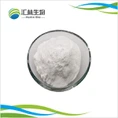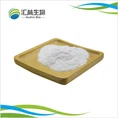1. What is Gluconolactone?

Gluconolactone is a white crystalline powder derived from gluconic acid, a substance naturally produced by mammals during carbohydrate metabolism[1]. Commercially, it is typically produced through the fermentation of corn-derived glucose[2]. As a polyhydroxy acid (PHA), it gradually converts to gluconic acid in aqueous solutions.
2. Health Benefits of Gluconolactone Powder
Research indicates gluconolactone may provide:
- Gentle Exfoliation: Hydrolyzes into gluconic acid at skin's surface pH (4.5-5.5), aiding in dead cell removal without irritation[3].
- Antioxidant Activity: Chelates metal ions that contribute to oxidative stress in cosmetic formulations[4].
- Moisture Regulation: Forms humectant films in personal care products at 4-12% concentrations[5].
- Food Texture Control: Functions as a mild acidulant and sequestrant in dairy/meat products at 0.1-0.5%[6].
Note: Effects are based on physicochemical properties and in vitro studies.

3. Industrial Applications

Food Industry
- Acidulant: Adjusts pH in dairy products (yogurt, cheese) with delayed acid release[7]
- Preservative Aid: Enhances efficacy of antimicrobials in meat processing
- Leavening Agent: Component of slow-release baking powders

Cosmetic Industry
- PHA Exfoliants: Used in cleansers (3-8%) and toners (2-5%) for sensitive skin[8]
- Stabilizer: Maintains active ingredient potency in pH-sensitive formulations
- Anti-Oxidant Booster: Synergizes with vitamin C derivatives at 0.5-2%

Technical Uses
- Metal Cleaning: Removes mineral deposits in industrial descaling solutions
- Pharmaceutical Excipient: Tablet binder with improved dissolution profiles
4. FAQ
Q: Is gluconolactone safe to eat?
A: It holds GRAS (Generally Recognized As Safe) status from the FDA (21CFR184.1318) and is approved as food additive E575 in the EU[9].
Q: Is it natural?
A: While naturally occurring, commercial material is typically fermented from plant-derived glucose. Certifications (e.g., COSMOS) define acceptable production methods.
Q: How does it differ from glucuronolactone?
A: Despite similar names, they are distinct compounds. Glucuronolactone is a liver metabolite used in energy drinks, while gluconolactone is primarily an acidulant/PHA.
Q: What's its typical pH in formulations?
A: In 1% aqueous solution, pH ranges from 3.0-3.5. Formulators adjust to target pH using buffer systems.
Q: Can it replace AHA exfoliants?
A: As a larger molecular PHA, it penetrates slower than glycolic acid, resulting in reduced irritation potential[10].
References
- J Biol Chem. 1953;202(1):431-444 [Mammalian metabolism]
- Appl Microbiol Biotechnol. 2010;87(2):407-415 [Production methods]
- J Cosmet Sci. 2016;67(4):249-258 [Exfoliation mechanism]
- Food Chem Toxicol. 2018;116(Pt B):328-334 [Antioxidant properties]
- Int J Cosmet Sci. 2020;42(5):448-455 [Humectant function]
- J Food Sci. 2019;84(6):1369-1376 [Food applications]
- Food Technol Biotechnol. 2015;53(4):385-393 [Dairy applications]
- Clin Cosmet Investig Dermatol. 2021;14:769-774 [Sensitive skin formulations]
- EFSA Panel on Food Additives (2014) EFSA Journal 12(7):3777
- Dermatol Res Pract. 2019;2019:8019364 [PHA vs AHA comparison]





